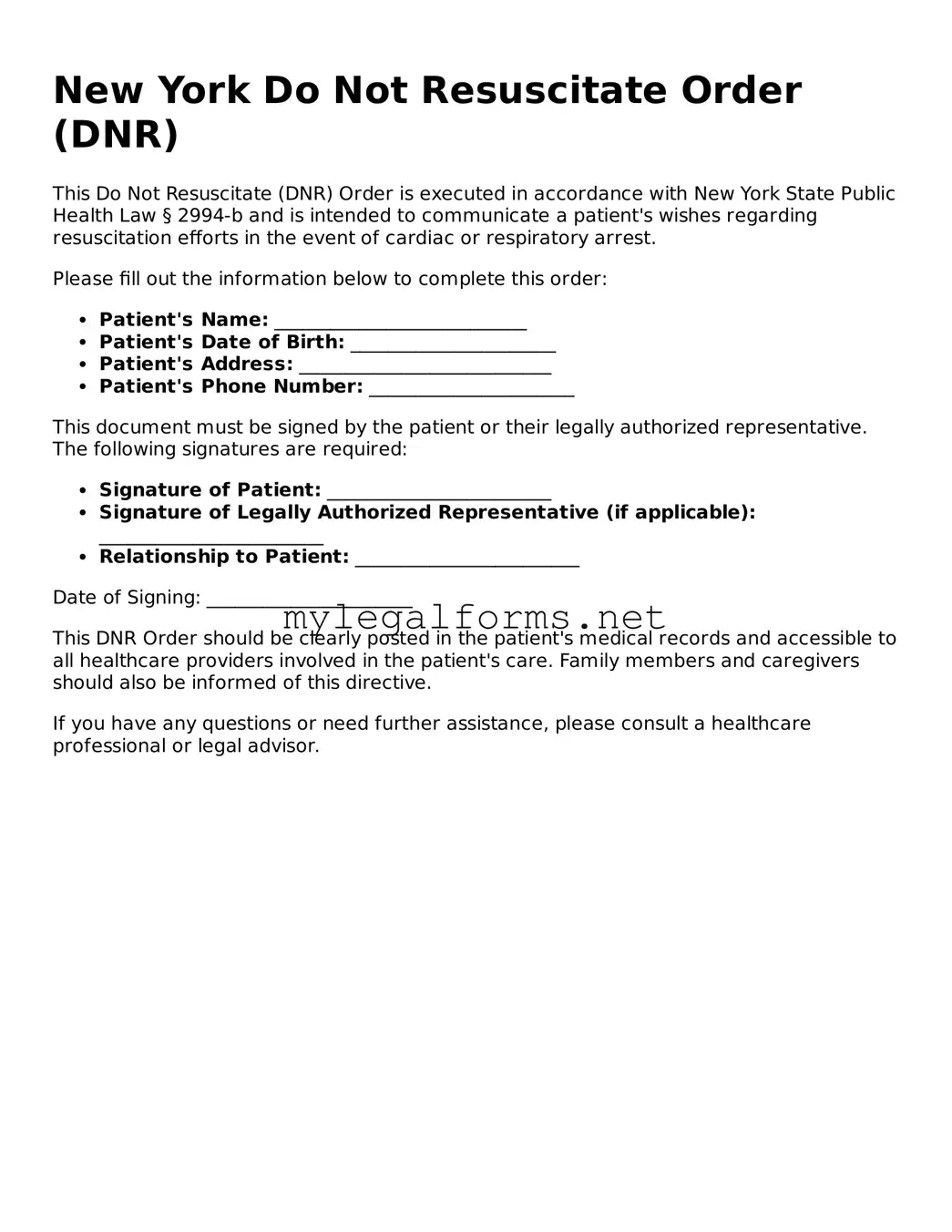New York Do Not Resuscitate Order (DNR)
This Do Not Resuscitate (DNR) Order is executed in accordance with New York State Public Health Law § 2994-b and is intended to communicate a patient's wishes regarding resuscitation efforts in the event of cardiac or respiratory arrest.
Please fill out the information below to complete this order:
- Patient's Name: ___________________________
- Patient's Date of Birth: ______________________
- Patient's Address: ___________________________
- Patient's Phone Number: ______________________
This document must be signed by the patient or their legally authorized representative. The following signatures are required:
- Signature of Patient: ________________________
- Signature of Legally Authorized Representative (if applicable): ________________________
- Relationship to Patient: ________________________
Date of Signing: ______________________
This DNR Order should be clearly posted in the patient's medical records and accessible to all healthcare providers involved in the patient's care. Family members and caregivers should also be informed of this directive.
If you have any questions or need further assistance, please consult a healthcare professional or legal advisor.
